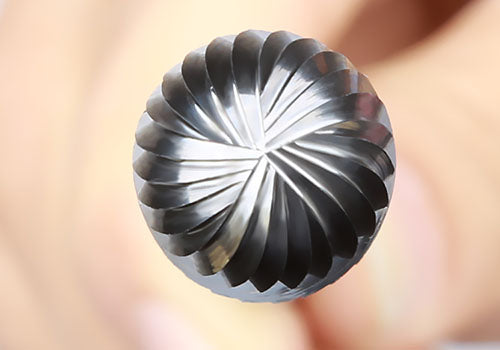
A Beginner's Guide to Using Carbide Burrs
Share
Carbide burrs are versatile tools that can be used for a variety of tasks such as grinding, shaping, and deburring. They are commonly used in metalworking but can be used on other materials such as wood, plastic, and even bone. If you're new to using carbide burrs, here is a beginner's guide to help you get started.
Types of Carbide Burrs
Carbide burrs come in many different shapes and sizes, but they can be broadly classified into three categories: single-cut, double-cut, and aluminum-cut.
Single-cut burrs have a single flute that cuts material in a linear direction. They are ideal for deburring and finishing tasks. The shape of the single-cut burr makes it easy to control, and it is best suited for removing small amounts of material.
Double-cut burrs have two flutes that cut material in opposite directions, which makes them ideal for shaping and removing material. The cross-cutting action of the double-cut burr makes it more aggressive than the single-cut burr, and it is best used for larger material removal.
aluminum-cut burrs have an aluminum abrasive coating that makes them suitable for grinding and cutting aluminum, magnesium, copper, soft steel, brass, zinc alloys, hard rubber, most plastics, and non-ferrous metals.. The aluminum-cut burr can be used for both shaping and finishing, but it is best suited for grinding hard materials.
How to Use Carbide Burrs
Before using a carbide burr, make sure to wear protective gear such as safety glasses, gloves, and a dust mask. Here are the steps to follow:
- Secure the carbide burr in a die grinder or rotary tool. Make sure it is properly tightened to avoid accidents.
- Turn on the tool and start grinding or shaping the material. Make sure to apply even pressure and avoid using too much force.
- Keep the burr moving to prevent overheating and ensure even wear. If the burr becomes too hot, let it cool down before continuing.
- When you're finished, turn off the tool and remove the burr. Clean it with a wire brush and store it in a safe place.
Tips for Using Carbide Burrs
Here are some tips to help you get the best results when using carbide burrs:
- Use the right type of carbide burr for the task at hand. Single-cut burrs are ideal for finishing while double-cut burrs are better for shaping and removing material.
- Use the right speed for the material you're working with. Harder materials require slower speeds to avoid overheating.
- Keep the burr moving to prevent overheating and ensure even wear.
- Avoid using too much pressure as it can cause the burr to break or wear out quickly.
- Clean the burr regularly with a wire brush to remove any debris or buildup.
- Experiment with different shapes and sizes of carbide burrs to find the one that works best for your project.
- Practice on scrap material before working on your final project to get a feel for the tool.
With these tips and techniques, you'll be able to use carbide burrs with confidence and achieve great results in your projects. Happy grinding!




